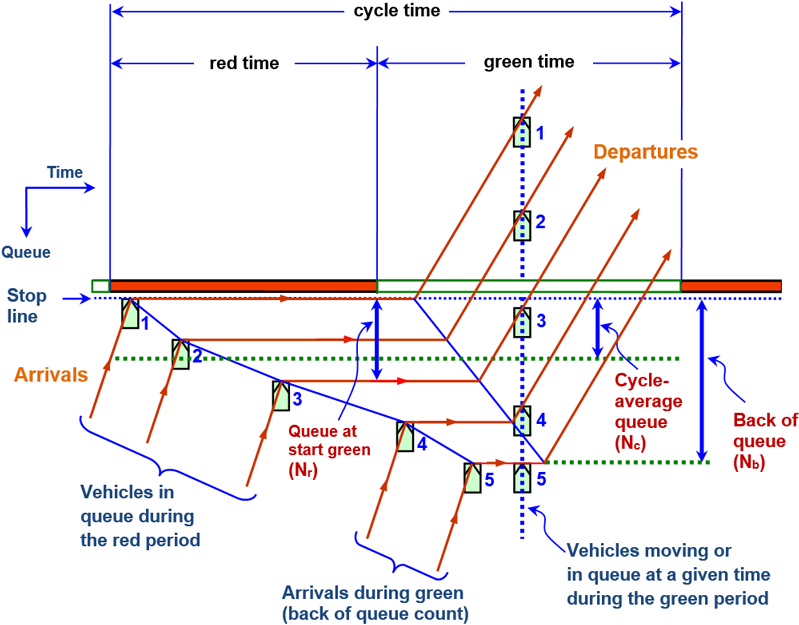A critical review of Austroads Report AP-R621-20
Revised version published as Austroads Report AP-R647-21 “Management of Traffic Modelling Processes and Applications”
Queue length definitions
The Austroads report discusses the use of queue length for model validation and states that "… the issues with both the queue calculation within traffic models and accurate on-site measurement is a common issue …". In relation to this, it is useful to discuss different queue length definitions that can be used in models, and the need for the field surveys to match the definition used in the model used. The report acknowledges this ("software packages may each calculate queue lengths using different criteria and methodologies which add a further level of complexity") but does not clearly define which queue length definition it is using.
In SIDRA, back of queue, queue at the start of green period and cycle-average queue are included in output. These are shown in the figure given here. While back of queue is emphasised for modelling short lane capacity, exit blockage (queue spillback) and so on, queue at the start of green period is easier to survey.
The importance of calibrating the model for the average value of the chosen queue length measure, rather than percentile queue values should also be emphasised. A queue length survey method is provided in the SIDRA user guide.

Back of queue
The Austroads report seems to be using the term "maximum queue length" to mean back of queue ("the maximum length of the queue occurs at the point where an arriving vehicle is no longer delayed by the back of the discharging queue") but the term could be understood as the largest (100th percentile) queue length observed.
It is important to understand the back of queue as the maximum backward extent of queued vehicles during a signal cycle, as measured from the stop line to the last queued vehicle. The average and percentile values of the back of queue are relevant to various aspects of intersection and network analysis.
